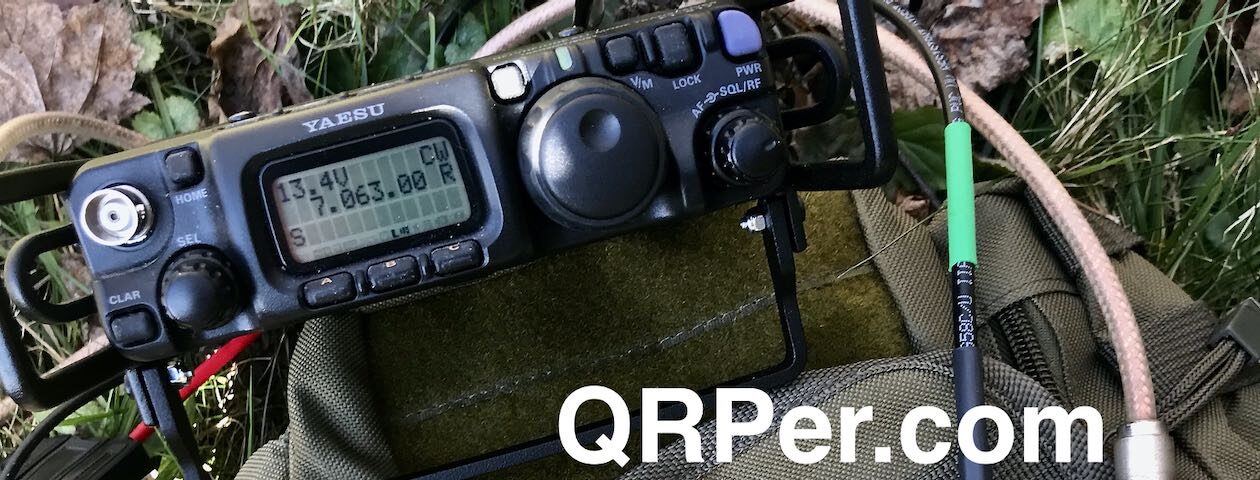Many thanks to Micah (N4MJL) who shares the following guest post:
Activating Grandeur Peak (W7U/NU-065)
by Micah (N4MJL)
Emboldened by my successful activation of W7U/SL-022 (7,500ft MSL) a week earlier, I decided to up my SOTA game and try to activate Grandeur Peak (W7U/NU-065).
Grandeur Peak is located in the Wasatch Range (POTA Entity US-4398) just to the east of Salt Lake City. It is approximately three ridges south of my last weeks SOTA activation. Which you can read about here.
The shortest distance between two points is a straight line, that should be true for climbing a mountain right?……
 After conducting an area study, I decided to take the “West Ridge Route” it is a short 2.2 mile trail to the top of Grandeur Peak. Some of the comments on the hiker forums described this route as “undoubtedly one of the steepest hikes on the Wasatch Front.” Another commenter said, “this short but brutally-steep hike gains over 3,300ft elevation in a mere 2.2 miles to reach the summit. Adding up to just a 4.4-mile round trip, this is a quick jaunt for the most accomplished climbers.”
After conducting an area study, I decided to take the “West Ridge Route” it is a short 2.2 mile trail to the top of Grandeur Peak. Some of the comments on the hiker forums described this route as “undoubtedly one of the steepest hikes on the Wasatch Front.” Another commenter said, “this short but brutally-steep hike gains over 3,300ft elevation in a mere 2.2 miles to reach the summit. Adding up to just a 4.4-mile round trip, this is a quick jaunt for the most accomplished climbers.”
Reading in between the lines I deduced that this was a short 2.2 mile jaunt to the top, with a bit of elevation gain. After all, we know how these drama queens…I mean hikers…sometimes embellish hiking stories. Either way, this looked like a good way to stretch my legs after flying almost 8 hours the day before. There was a significantly longer trail with lots of switchbacks and more gentle elevation gain, that I could take, but I’m a millennial and delayed gratification is apparently not a strong suit for me. Looking at the SOTA page for this summit, it had only one QSO logged this year, even though this summit had been activated 14 times since April 2011.
On the morning of 25 August 2024 I got up at 0700 and packed up my REI Flash 22 day pack. I was taking with me a full 2 liter hydration pack along with 2 more 1 liter water bottles (4L water total), along with assorted snacks and electrolyte additives. Based on my last SOTA activation in the area, I decided I should bring some emergency gear just in case. I brought my trusty Surefire EdCL2-t flashlight [QRPer affiliate link], a few raps of duck-tape around a stick of chapstick, a box of matches, and a few feet of toilet paper. After all some things just happen, like the effects of coffee on an empty stomach. Don’t leave without toilet paper.
Since the temperature in Salt Lake City was projected to be around 85F, I decided to bring a flannel shirt and wool cap for the summit. There is virtually no humidity in UT and the temperature at 8,300ft could easily be 15 degrees cooler with possible wind chill. I’m bad enough sending CW without being chilled.
My radio gear consisted of the following:
- Rig: Elecraft KH-1
- Ant: SOTABeams Band Hopper III (resonate on 40\30\20)
- Key: BaMakey TP-III
- Mast: SOTAbeams Tactical Mini 19.6ft
- Battery: Bioenno 12v 3Ah (just in case)
During my 15 minute Uber ride from the hotel to grandeur Peak West face parking lot my driver was incredulous that anyone of sound mind would ever voluntarily climb such a mountain. He was convinced that I was going to be eaten by mountain lions.
After my first 5 minutes on the trail I started to question whether or not I actually was of sound mind.
After 15 minutes on the trail I began to think that there may have been some truth to what was written on the hiker forums about this trail.
After 30 minute on the trail I was definitely working through the five stages of grief!
1) Denial: how was I sooo stupid to be hiking straight up a mountain
2)Anger: I’m an idiot for NOT listening to those hiker forums
3)Bargaining: if I can just make it ten more feet further I’ll take another selfie
4)Depression: if I don’t get to the top, I won’t have a selfie at the summit and I’ll never get a dopamine rush from public accolades.
Seriously, the first 0.8 mile was brutal. The trail was completely straight up the ridge, and it was all loose gravel with little to no vegetation to stabilize the trail. If I started to slide down, I would be sliding aloooong way down. My plan if I tripped or started to slide was to go flat on my stomach like a star fish In hopes of stopping my down hill slide. I tried to get pictures to show how “brutal” this section of the climb really was. Unfortunately, pictures really don’t do justice.
It’s a 3,346 ft elevation gain in 2.2 miles; what more needs to be said? Looking ahead, I realized that if I could make it a bit further up, the mountain started to look more green indicating some shrubbery. I hoped this meant the trail would stabilize for me. Being young and bullet proof, I pushed on. Continue reading Climbing Grandeur Peak: Micah’s SOTA Adventure in Utah’s Wasatch Range




















































































































